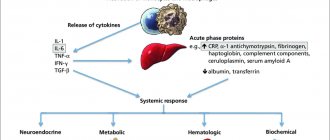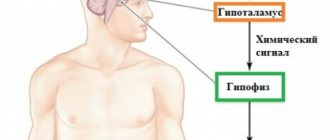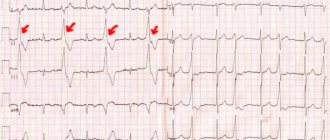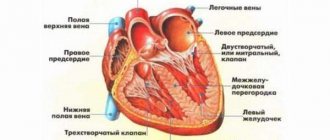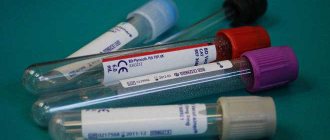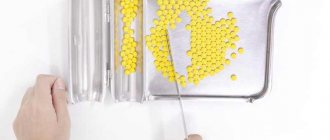ESR is one of the indicators in a clinical blood test. When assessing the results of the study, the doctor pays special attention to it. Elevated values of leukocytes and erythrocyte sedimentation rate always mean one thing - the person is sick. The question immediately arises: how to lower ESR in the blood and will this contribute to recovery? To answer, you first need to understand what the indicator means, what its normal values are and what its role in diagnosis is.
What is ESR: methods of determination
ESR is an analysis that determines the rate at which blood is divided into plasma and red blood cells. The indicator is displayed in millimeters of plasma deposited over red blood cells per hour.
The degree of crowding of blood platelets indicates the presence of an inflammatory process. The analysis refers to studies that have little specificity - a low ESR in the blood does not indicate that there is no inflammatory process.
There are a number of methods for determining the indicator, but two of them are used: according to Panchenkov and the capillary photometry method. With the Pachenkov method, uncoagulated blood is placed in a vertically located capillary pipette with a scale of 100 mm, and after an hour the settled red blood cells are counted.
Capillary photometry – analysis using automatic analyzers TEST1. At the beginning of the test, the samples are mixed to disaggregate the red blood cells. The analyzer measures the movement of red blood cell aggregation. The method is similar to the Westergren method, which is considered a model for determining ESR and has the same reference values.
Blood for analysis is taken from a vein by puncture or from the phalanx of a finger. The analysis time for all methods does not exceed one working day.
Reducing ROE with herbs
In addition to foods, many medicinal herbs also provide a lower level of ESR.
The most popular are coltsfoot, chamomile, calendula, sea buckthorn and linden blossom:
- for preparing coltsfoot broth 2 tbsp. spoons of dry raw materials are poured into 200 ml of water, put on low heat and brought to a boil, then removed from the stove, covered with a lid (so that the broth brews better) and cooled to room temperature. Take 100-200 ml twice a day half an hour before breakfast or dinner;
- Sea buckthorn berries are dried and brewed, adding to tea. The resulting drink is drunk during the day (at the rate of 200-300 ml per day), divided into equal amounts per dose;
- Chamomile and calendula flowers are brewed in a 1:1 ratio. The raw materials are poured with boiling water, the container in which the herbs are infused is tightly closed and wrapped in a towel. When cooled to room temperature, filter and take 100 ml after each meal;
- Linden blossom is also brewed in the same way. The only difference is that this infusion must be drunk before bed. It relieves inflammation well, thereby helping to reduce ESR.
Before thinking about how to lower the ESR, it is important to determine whether its indicator is truly frightening
Nowadays, medicine is constantly moving forward. Almost every day, more and more new ways of diagnosing and treating certain problems that can arise in a living organism and lead to pathology appear.
But, taking into account all the innovations, the good old ESR indicator is still popularly used for diagnostics in both adults and children. Such an analysis remains an integral indicator of the examination in almost any case.
The ESR indicator refers to general blood tests and can be ordered from any doctor. If the indicator deviates from the norm, the cause must be established and further measures taken.
Normal ESR in the blood
The ESR indicator is influenced by various physiological factors. Smoking and insufficient fluid intake for the body lead to a slowdown in the rate of sedimentation. The simplest answer to the question of how to lower ESR in the blood is to drink less water. But these are not all the factors influencing the test results. Age and gender are of great importance. The fewer red blood cells in the blood, the higher the sedimentation rate - in women the normal ESR is slightly higher than in men. This is explained by the fact that the blood of the fairer sex is renewed more often, the level of red blood cells is lower than in men, and red blood cells settle faster.
The ESR indicator is measured in mm/h, its normal values are indicated taking into account age and gender:
- Children from 0 to 7 days of life - no more than 1.
- From a week to 6 months – 2-5.
- From six months to a year – 4-10.
- 1 year – 10 years – 4-12.
- 11-18 years old – 2-12.
- Men under 50 years old – 2-15.
- Women under 50 – 2-20.
- Men over 50 – 2-20.
- For women over 50 years of age, the norm is 2-30.
Concept of erythrocyte sedimentation rate
An erythrocyte is one of the many elements of blood. The erroneous opinion of many is that the main value in analyzes is the concentration of red blood cells. Pay attention to the rate of their settling. A normal ESR in a general analysis indicates the patient’s health. When the level is too high, one can judge the presence of some pathology.
The patient's blood is drawn early in the morning on an empty stomach. It is left in the test tube for an hour. To prevent clotting, a special serum is added. After which you can see a clear line. From this moment this indicator is determined. A decrease or increase indicates the presence of a particular disease.
Throughout life, various changes occur in the body. When viruses or infections occur, the number of different blood cells changes. Research can reveal even this. For the female body, the norm for ESR is considered to be from 3 to 15 mm/h.
For comparison, you can present other figures:
- For men, the norm is considered to be from 1 to 10 units.
- For children, the norm is considered to be from 0 to 2 units.
- For infants, the norm is considered to be from 12 to 17 units.
Absolutely any violations committed during blood sampling can affect further results. These include errors in the research technique or lack of proper experience of the laboratory assistant.
Norm of ESR in women
Normal values of indicators differ depending on gender. This is due to physiological characteristics. Before you learn how to lower ESR in the blood of women, you need to understand the norms of indicators:
Other factors also influence the indicator. One of the main ones is the menstrual cycle. Its absence is usually due to pregnancy or menopause. These periods are associated with serious hormonal changes, which affect the composition of all biological fluids of the body. During pregnancy, in the first trimester, a low ESR in the blood of women is considered normal (up to 13 mm/h), and in the third, on the contrary, it is increased (up to 45 mm/h).
The change in the indicator is influenced by nutrition - girls like to go on various diets. Body type also affects ESR. Many women stop taking care of themselves after giving birth; excess weight is associated with high cholesterol. Its high level helps to increase the erythrocyte sedimentation rate.
What are the causes of high ESR?
If the results of a laboratory test reveal a discrepancy with the usual norm, there is no need to be nervous and immediately engage in self-medication, taking it as a way to solve the problem. You need to monitor deviations in the direction of increasing or decreasing ESR in stages. This applies to cases where there are no obvious symptoms of the disease. For example, women may have different ESR levels at different ages. For a girl, the norm is from 3 mm/h, and for a mature and elderly woman – up to 53 mm/h. Therefore, doctors first take into account the patient’s age, and then other factors.
The value of this indicator largely depends on the content of various proteins in the blood plasma.
This means that in any pathological condition that can lead to the rapid formation of these substances in the human body, an increase in ESR occurs. These conditions include:
- inflammation of the respiratory tract, genital organs, kidneys, etc.;
- serious infectious diseases (tuberculosis, syphilis);
- autoimmune diseases;
- myocardial infarction;
- malignant tumors;
- poisoning;
- severe injury to soft tissues and others.
When the cause is oncology, the coefficient will be much higher than normal. Cancerous tumors in the lungs, kidneys, respiratory and other organs can be determined by the dynamics of the coefficient growth to 30-40 units.
In addition, the erythrocyte sedimentation rate can be increased with anemia, excess weight, kidney disease, and the use of medications. In addition, there are physiological reasons for the active growth of ESR. This is the patient’s age, or more precisely, the changes that occur in the body due to age. In women, the indicator may be higher than normal on menstrual days, during pregnancy. As for pregnant women, this figure is doubled, as the blood is diluted and its protein composition is disrupted. After the birth of a child, an elevated ESR remains for some time.
What does an increased ESR indicate?
An increase in the level of acute phase pathological proteins promotes erythrocyte aggregation. Their sedimentation occurs faster, the ESR value increases. Reasons for the increase:
Reduced ESR
The erythrocyte sedimentation rate is not always elevated during illness. A reduced ESR in the blood of a child or adult is a consequence of certain disorders in the body:
These disorders occur when certain pathologies develop.
Why are ESR levels elevated?
Excessively high values of this indicator indicate excess fibrinogen in the blood. This protein is released in large quantities during inflammatory or necrotic processes. Therefore, the more severe the inflammatory or infectious diseases, the higher the erythocyte sedimentation rate.
Autoimmune diseases also affect ESR levels - rheumatoid arthritis, systemic lupus erythematosus or multiple myeloma. An increased rate of red blood cell precipitation in these conditions is observed due to an overactive immune system.
Other reasons causing an increase in ESR levels in the blood:
- Diseases of the excretory system;
- Benign or malignant neoplasms of various etiologies;
- Toxic, viral or idiopathic hepatitis;
- Severe injuries to various parts of the body;
- Diseases of the thyroid gland (thyrotoxicosis);
- Diabetes;
- Infarction of the kidneys, myocardium, lungs;
- Purulent processes;
- Anemia (hemolytic, iron deficiency, idiopathic);
- Hypercholesterolemia;
- Long-term use of oral contraceptives;
- Hydremia (severe blood thinning);
- Chronic heart, liver or kidney failure;
- High blood pH;
- Long-term use of non-steroidal anti-inflammatory drugs (aspirin).
Autoimmune diseases
During pregnancy, ESR levels increase sharply. However, this is considered a variant of the norm and does not pose a danger to either the fetus or the mother.
Why does ESR increase in a child?
Deviations from the norm in the greater direction of ESR indicators in children in most cases are associated with the development of inflammation. But there are other factors:
In very young children, an increase in ESR may be associated with teething. During puberty, deviations from the norm are influenced by natural physiological changes.
It is better for parents to think not about how to lower the ESR in the baby’s blood, but about how to eliminate the cause. At the first symptoms of inflammation, you should contact your pediatrician.
Norms depending on gender and age
The gender and age of the subjects influence the ESR values taken as the norm.
- In healthy newborns – 1-2 mm/hour. The reasons for deviations from standard indicators are acidosis, hypercholesterolemia, high hematocrit;
- in children 1-6 months – 12-17 mm/hour;
- in preschool children – 1-8 mm/hour (equal to the ESR of adult men);
- For men – no more than 1-10 mm/hour;
- In women - 2-15 mm/hour, these values vary depending on the level of androgen; from the 4th month of pregnancy, ESR increases, reaching 55 mm/hour by childbirth, after childbirth it returns to normal within 3 weeks. The reason for the increase in ESR is the increased level of plasma volume in pregnant women, cholesterol levels, and globulins.
An increase in indicators does not always indicate pathology; the reason for this may be:
- Use of contraceptives, high molecular weight dextrans;
- Fasting, dieting, lack of fluid, leading to the breakdown of tissue proteins. A recent meal has a similar effect, so blood is taken to determine ESR on an empty stomach.
- Increased metabolism caused by physical activity.
| Age | ESR rate (mm/hour) |
| Newborn babies | 0-2 |
| Infants up to 6 months | 12-17 |
| Children and teenagers | 2-8 |
| Women under 60 years old | 2-12 |
| Women in the 2nd half of pregnancy | 40-50 |
| Women over 60 years old | Up to 20 |
| Men under 60 years old | 1-8 |
| Men over 60 years old | Up to 15 |
Acceleration of ESR occurs due to an increase in the level of globulins and fibrinogen. Such a shift in protein content indicates necrosis, malignant transformation of tissue, inflammation and destruction of connective tissue, and immunity disorders. A prolonged increase in ESR above 40 mm/hour requires other hematological studies to determine the cause of the pathology.
| Age | Norm (mm/hour) |
| Girls under 13 years old | 7-10 |
| Girls - teenagers | 15-18 |
| Women of reproductive age | 2-15 |
| Women over 50 years old | 15-20 |
The normal values for a woman fluctuate depending on changes in her body.
Indications for a blood test for ESR in women:
- Anemia,
- Lack of appetite,
- Pain in the neck, shoulders, headache,
- Pain in the pelvic organs,
- Joint pain,
- Unreasonable weight loss.
| Body type | Norm ESR (mm/hour) in the 1st half of pregnancy | Norm ESR (mm/hour) in the 2nd half of pregnancy |
| Fat women | 18-48 | 30-70 |
| Skinny women | 21-62 | 40-65 |
ESR in pregnant women depends directly on the level of hemoglobin.
| Age | ESR rate (mm/hour) |
| At birth | 1-2 |
| Day 8 | 4 |
| Day 14 | 17 |
| Over 2 weeks | About 20 |
| In preschool children | 1-8 mm/hour |
To have an idea of the normal ranges of the indicator, consider the ESR norms for different groups of subjects. The standards for women, men and children have certain differences.
For representatives of the female population, a wider range of values has been established since youth than for persons of the opposite sex. In girls under 15 years of age, the ESR rate ranges from 2 to 15 mm/h; from 15 to 50 years of age, it is allowed to increase to 20 mm/h, and after 50 – up to 30 mm/h. The erythrocyte sedimentation rate can increase to 45 mm in women expecting a child.
For the strong half of humanity, the following ESR boundaries have been established:
- up to 20 years – 1-10;
- up to 60 years old - 2-15;
- over 60 – up to 20 mm.
The erythrocyte sedimentation rate in children should not exceed 10 mm for boys and 15 mm for girls 10-15 years old. Deviations are considered not only values above normal, but also values of ESR that are too low (less than 1 mm), so pediatricians are looking for reasons why the value increases and why the value decreases.
Reduction methods
Indicators of the erythrocyte sedimentation reaction are normal in the absence of diseases. There are several methods of how to lower ESR in the blood, or rather reduce inflammation. Usually the test is prescribed by a doctor, who also carries out the treatment. It is highly undesirable to take medications on your own, since incorrectly selected drug therapy can worsen the situation.
Traditional recipes can be used independently, but not abused, and only after consultation with the doctor.
Let's sum it up
ROE deceleration is a less common phenomenon than acceleration. And in most cases it does not lead to serious complications. But this does not mean that the ROE indicator below the norm does not require correction. Any deviations in the body signal the formation of pathological processes. Therefore, it is advisable to promptly identify and eliminate the cause affecting the erythrocyte sedimentation rate. Be healthy, take care of yourself and your loved ones.
A blood test can tell us many things about the state of our body. Increased sugar, uric acid in the blood - these diseases are on everyone’s lips. But what is ESR and how can its increase affect human health? How to reduce ESR?
How to check ESR?
If a blood test is placed in a glass tube, then under the influence of gravity the red blood cells will settle to the bottom of the tube, thus the blood will be divided into two layers, the upper layer will consist of transparent plasma, and the lower layer will consist of settled red blood cells. It is the erythrocyte sedimentation rate (millimeters/hour) that is the indicator measured to analyze the condition of a person’s blood.
Factors that may affect COE readings
The SOE value can vary depending on many pathological and physiological factors. In women, this figure is slightly higher than in men: 2-15 mm/h and 1-10 mm/h, respectively. In a pregnant woman, the SOE level can rise to 45 mm/h and this will remain the norm, which does not need to be reduced. The rate also increases during menstruation. In such cases, there is no need to reduce the ESR; it is enough to undergo a repeat analysis.
It is better to take a blood test in the morning, because... During the day, the ESR fluctuates; the maximum level is possible when donating blood during the day. In acute and inflammatory processes, the erythrocyte sedimentation rate may change 24 hours after the onset of the disease due to an increase in the number of leukocytes.
Reasons for increasing ESR
An increase in erythrocyte sedimentation rate can signal the onset and development of inflammatory processes in the body. Tissue necrosis in diseases such as tuberculosis or heart attack can also be detected by this analysis. The reason for the increase in ESR also depends on the value of its indicator. When the indicator increases by 40 mm/h and above, the doctor can judge the occurrence of diseases such as: severe pneumonia, purulent inflammation of bone tissue, autoimmune diseases, metabolic diseases of the joints, hematological diseases or even oncological problems. With this indicator, ESR remains elevated for a long time without treatment and is easy to detect. Only a doctor will help you choose treatment and answer your question of how to reduce ESR.
With a slight shift in the indicator to approximately 30 mm/h, we can assume mild, non-purulent inflammatory processes that can occur with: sinusitis, pyelonephritis, prostatitis, inflammatory diseases of the uterine appendages, uncomplicated pneumonia, synthitis, and chronic infectious diseases. By taking additional tests and being examined by a doctor, you can reduce the ESR along with treatment of the identified disease.
An increased ESR may sometimes indicate causes uncharacteristic for its change, such as: diseases of the endocrine system, anemia, trauma, bone fractures, poisoning with pesticides, intoxication, old age, postoperative conditions.
How to reduce ESR?
It is important to remember that an elevated ESR in itself is not a disease or the cause of a disease. Rather, the erythrocyte sedimentation rate is a symptom of the diseases that have already been mentioned above
Thus, it is not the indicator that needs to be treated, but the cause of the indicator. The general practitioner, after analyzing the blood condition, prescribes treatment to reduce ESR or refers you to a specialized specialist.
To reduce EOS, anti-inflammatory infusions of medicinal herbs based on traditional medicine can be taken as an additional treatment. Helps reduce ESR and raw radish, as well as a decoction of beetroot
It is important to remember that traditional medicine can be taken as a parallel treatment, but it should not replace a trip to the doctor. A timely decrease in ESR will help avoid the development of inflammatory processes in the body and prevent the occurrence of serious diseases
Analysis of the ESR indicator is part of a general clinical blood test aimed at identifying pathological conditions of various organ systems. The erythrocyte sedimentation rate may increase due to inflammatory, infectious or idiopathic diseases.
Red blood cells and their sedimentation rate
How to lower ESR with drugs
Test results are affected by medications taken. Usually, before undergoing an examination, the doctor discusses with the patient the need to stop taking medications, since when they are used, the test may show a reduced ESR in the blood in men and women.
The analysis provides information about the presence of an inflammatory process in the body. It is used to monitor infectious, autoimmune, oncological diseases and complex pathological processes. In order to lower ESR, it is necessary to eliminate the cause that contributes to its increase.
In anemia, the erythrocyte sedimentation rate will decrease if hemoglobin is increased. If there are significant deviations from the norm in iron-containing protein, folic acid, Hemodin, Totema, Irovit, Maltofer are prescribed.
If tuberculosis is detected, it will not be possible to quickly lower the ESR in the blood. The disease is considered severe and has a long therapeutic course. To avoid addiction, the drugs are alternated, so the list is quite large. The most effective are Isoniazid, Pyrazinamide, Rifampicin, and Ethambutol.
If a person suffers from a chronic disease that cannot be completely cured, such as hepatitis C, it is necessary to constantly adjust the course of medications prescribed by the doctor. If you have diabetes, regularly check your glucose levels; if their levels increase, you should discuss with your doctor a possible replacement of medications that lower blood sugar.
How to lower the value with medication
Medicines that quickly reduce ESR levels in the blood can be hazardous to health if taken independently. Therefore, they should be prescribed by a doctor after a full examination that identifies the causes of the violations that have arisen.
Folic acid
The drug belongs to the stimulants of hematopoiesis (blood formation). Available in tablet form. Takes part in the synthesis of nucleic and amino acids, pyrimidines and other substances necessary for the normal functioning of the body.
Important information: What is hematocrit in a blood test and the norm for women by age (table)
Folic acid is almost completely absorbed from the digestive tract. Binds to plasma proteins. Subject to breakdown in liver tissue with the formation of tetrahydrofolic acid. It is evacuated from the body with the kidneys in the form of decay products.
With an increase in ESR caused by anemia, the initial dose of the drug is 1 mg per day. The use of large dosages of the drug is contraindicated due to the risk of developing tolerance to folic acid.
During maintenance treatment, the daily dosage changes:
- newborns - 0.1 mg;
- up to 4 years of age - 0.3 mg;
- patients over 4 years of age and adults - 0.4 mg;
- during pregnancy - from 0.1 to 0.8 mg.
The dose is increased to 5 mg per day with:
- alcoholism;
- hemolytic anemia;
- chronic infections;
- chronic stress;
- liver failure and hepatitis;
- malabsorption.
Hemodin
There are no cases of using the drug Hemodin with elevated ESR.
Totem
The drug is intended for oral administration. The main active ingredients are iron gluconate dihydrate, manganese gluconate, copper gluconate. It is a dark-colored liquid with a peculiar odor and a small amount of sediment.
Iron, which is part of the drug, is necessary for the normal process of heme synthesis, the main component of hemoglobin. Copper and manganese are microelements that are cofactors of the most important enzymes. Absorption of the drug occurs in the duodenum and occurs faster when there is a lack of iron in the body.
The medication is indicated for bleeding and increased body need for iron. It is prescribed for pathologies accompanied by an increase in ESR levels.
To correct indicators, the drug is administered orally by dissolving the required amount of the contents of the ampoules in water. Adults are prescribed 2 to 4 ampoules per day. For children, the amount of solution is determined based on the dosage of the amount of iron - from 5 to 7 mg per 1 kg of body weight.
Pyrazinamide
This is a drug used to eliminate the localization of the focus of activity of tuberculosis pathogens. With this disease, there is an increase in ESR. When treating tuberculosis with Pyrazinamide, mycobacteria acquire tolerance to the active component of the drug, so it is prescribed together with Isoniazid. The drug manifests itself as a bacteriostatic agent.
Indicated for tuberculosis, accompanied by a persistent increase in ESR in a blood test.
The drug should be taken orally after meals. The dose for adults is 1 to 2 g per day. It is divided into several doses. For older people and people suffering from dystrophy, the recommended dosage may be reduced. For children, the daily amount of the drug is determined from the ratio of 20-30 mg per 1 kg of body weight.
Important information: Norm of lymphocytes in the blood of men (table by age)
Rifampicin
This drug is used to treat tuberculosis. Taking the medication helps reduce ESR values. It is used to treat severe infectious pathologies of the lower respiratory tract, urinary system, and gall bladder. Active against staphylococci, gonococci and meningococci. These microorganisms develop resistance to this drug.
To reduce ESR, this drug is used on an empty stomach one hour before meals. The permissible dose is up to 0.6 g of Rifampicin. Intravenous administration of the drug is sometimes indicated for adults: the maximum dose is 0.6 g per day. Intravenous administration is prescribed for:
- acute progressive form of tuberculosis;
- purulent and septic processes;
- severe patient conditions.
Ethambutol
This drug belongs to anti-tuberculosis medications. Penetrating into the cell, it disrupts the synthesis processes of the bacterial cell. Active against tuberculosis bacilli and mycobacteria. A small number of microbes acquire resistance to the active component of the drug, ethambutol. The drug is excreted from the body by the kidneys.
Indicated for elevated ESR due to tuberculosis. Injected internally. The acceptable dosage of the drug is calculated based on 15 mg/1 kg of patient weight. The maximum amount is 20 mg of Ethambutol per day. The duration of treatment is at least 2 months. After this, the red blood cell sedimentation rate may decrease.
Reducing ESR using folk remedies
The use of alternative methods is permissible only after consulting a doctor. You can lower ESR in the blood at home with the help of herbs, vegetables, and fruits that help cleanse the blood:
In women, a low ESR in the blood may be a sign of a natural physiological process, so you should not get carried away with traditional medicine.
Erythrocyte sedimentation rate is one of the indicators in a general blood test. The presence or absence of an inflammatory process is determined by analyzing all values. ESR increases due to the occurrence of a pathological condition, therefore, if the disease is eliminated, the indicator will be normal.
Is it necessary to reduce ESR?
You cannot diagnose yourself based solely on ESR readings in tests, whether a patient’s ESR is increased or decreased
It is important to approach this comprehensively, to analyze the condition of the whole organism as a whole, the presence of chronic diseases, past illnesses... The doctor may prescribe a general diagnosis of the whole organism:
- Referral for biochemical blood test
- Check with a cardiologist, ESR deviates from the norm if myocardial infarction is suspected
- Checking for infections and inflammations in the body
- ESR in oncology
When the cause of an increased or decreased ESR is identified, the stage of the disease is determined, only then treatment is prescribed and the result of therapy is observed.
In addition, your diet should be rich in fiber and protein foods of natural origin.
Avoid processed foods and foods containing carcinogens.
The following products that effectively reduce ESR in the blood will be useful:
- black chocolate,
- citrus,
- fresh vegetables,
- especially red beets.
It is with their help that you can quickly and without harm normalize the erythrocyte sedimentation rate in the blood and at the same time cleanse the blood.
Taking certain medications can lower the ESR level for a while:
- calcium chloride,
- medicines that contain mercury,
- salicylates (salicylic acid, aspirin).
- Side effects of morphine, dextran, methyldorf, B vitamins).
In anemia, the erythrocyte sedimentation rate will decrease if hemoglobin is increased.
In case of significant deviations from the norm of hemoglobin (iron-containing protein), the following is prescribed:
- folic acid,
- "Hemodin"
- "Totem"
- "Irovit"
- "Maltofer."
In folk medicine, it is possible to reduce the erythrocyte sedimentation rate if this is not associated with the acute phases of diseases where the patient’s life is threatened. In case of emergency, you should immediately consult a doctor. Beetroot broth helps a lot.
Several dozen diseases can be hidden behind an ESR value raised above normal. The result of the analysis serves as an impetus for additional and deeper diagnostic procedures to find the cause of increased values above normal. The provoking factors are almost the same for representatives of different sexes, for adults and children.
Increase in men
In both men and women, ESR is higher than normal when:
- diseases of the urinary system;
- various anemias;
- disorders of fat metabolism;
- connective tissue diseases;
- autoimmune and tumor pathologies;
- long-term use of certain medications.
Among women
To the reasons listed above for an increase in ESR, several specific factors unique to women can be added. Their erythrocyte sedimentation rate increases when:
- pregnancy;
- in the first months after childbirth;
- during menstruation.
The reason for the acceleration of ESR above normal is often medications taken by a woman for a long time - hypocholesterol, antihypertensive drugs or contraceptives.
During pregnancy
Pregnancy is considered a physiological cause of ESR deviation above normal. The value of the indicator can increase to 25 mm/h in the second trimester and up to 35 mm/h in the third. Gynecologists look quite calmly even at indicators of 45 mm/h.
If the doctor has the slightest suspicion of the pathological nature of the increased ESR, the woman will be asked to retake tests or undergo additional tests. But most often this is not required, since elevated values during pregnancy are usually associated with iron deficiency anemia, and this condition can also be detected with a general blood test.
As follows from what was written above, ESR above normal is not an independent disease, but only an indirect sign indicating the likelihood of an inflammatory process or infection. Therefore, the only way to lower high values is by curing the underlying disease. Depending on the etiology, this may require drug therapy with antibiotics, antivirals, or anti-inflammatory drugs.
You can help the body cope with the disease faster with the help of immunostimulating agents, if approved by the attending physician. Healthy habits, proper nutrition, and sufficient physical activity will help strengthen your immune system.
Folk remedies that tell you how to reduce ESR should not be taken seriously. But you can heed the advice to drink fruit and vegetable juices, herbal teas and fortified decoctions, as these actions will help get rid of anemia, a common cause of increased ESR.
